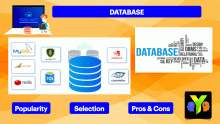Beginner’s Guide & Building blocks to Design a Website
Building an enterprise web application can be a complex and challenging task, but by following the right steps and using the right tools, you can create a robust, scalable, and user-friendly solution that meets the needs of your organization.

When I decided to build my own web application, few prominent questions came to my mind:
- Which front-end frameworks I should use for this development.
- Which back-end framework I should use and the data base.
- Last one but not the least where the hosting will be done on premise or cloud.
After doing some research I have got some answers, this blog is written to answer the first questions.
There are many front-end frameworks and libraries that can be used to build a web site, and the best one for your project will depend on your specific requirements. Some popular front-end frameworks and libraries include:
- React: A JavaScript library for building user interfaces, developed by Facebook.
- Angular: A JavaScript framework for building web applications, developed by Google.
- Vue.js: A JavaScript framework for building user interfaces, similar to React and Angular.
- Bootstrap: A responsive front-end framework for building mobile-first websites.
- Foundation: A responsive front-end framework for building mobile-first websites.
- Bulma: A lightweight CSS framework for building responsive websites.
It's important to choose a framework or library that is well-maintained, has a large and active community, and is well-documented. Additionally, consider the learning curve, the level of complexity that your project requires and the scalability of the framework.
Let’s compare the top three framework and understand what they are good at to adopt React vs Angular vs Vue.js
React, Angular, and Vue.js are all popular JavaScript libraries and frameworks for building user interfaces and web applications. Each has its own strengths and weaknesses, and the best choice will depend on your specific project requirements.
React:
- Developed by Facebook
- A JavaScript library for building user interfaces
- Uses a virtual DOM, which improves performance by minimizing the number of changes made to the actual DOM.
- Has a large and active community.
- Easy to learn and use and can be integrated with other libraries or frameworks.
- used to build reusable UI components.
Angular:
- Developed by Google
- A JavaScript framework for building web applications
- Uses two-way data binding, which allows changes in the model to automatically update the view and vice versa.
- It provides a lot of features out of the box such as routing, dependency injection, and a powerful template system.
- A bit more complex than React and Vue.js, and has a steeper learning curve.
Vue.js:
- A JavaScript framework for building user interfaces
- Similar to React and Angular in terms of functionality, but with a simpler and more approachable syntax.
- Uses a template-based syntax, similar to Angular's templates.
- Has a small and easy to learn API.
- Has a growing community and is often considered as a lightweight alternative to React and Angular.









